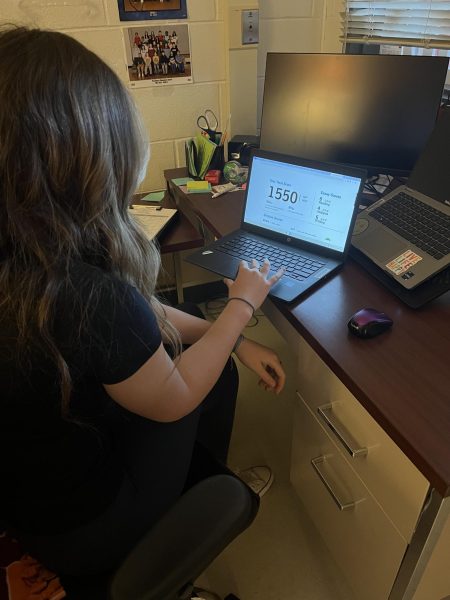Paperless SAT?
Test moves to online in the future
Standardized testing as we know it has changed drastically over the past few years. The SAT, one of the most commonly known tests, feared by high schoolers all around the world, has recently announced major changes. The test will no longer be the painstaking process of bubbling in answers and sitting in uncomfortable plastic chairs, but rather an online and adaptive process.
The new SAT is meant to be only two hours instead of three, contain shorter and more relevant reading prompts, allow calculators for the entire math section, and provide adaptive questions that change based on how the student is answering. Along with changes to tests like these, many colleges have dropped the requirement for standardized test scores all together, with just 5% of colleges still requesting them.
These new changes will not go into effect until 2024 for U.S. students.
Many seniors who have already completed the original SAT feel that it was a daunting task.
“The SAT took a lot of preparation and patience to complete,” senior Brian Mercado said. “I had a hard time pacing myself and staying focused throughout the entire test.”
The test combined content learned over many years, and each of the four sections had a certain time limit.
“It was very stressful having to sit down for three hours and try to recall the information needed on the test that I learned years ago,” senior Andrew Nguyen said. “The timing was also stressful, having to complete certain sections in a limited amount of time.”
Some underclassman have already started preparing for the SAT with preparatory classes or tests such as the PSAT.
“The bubble answers are hard to keep track of, and it’s impossible to figure out which question you need to go back to,” sophomore Xavier Halloun said. “The test is so picky with how you bubble in answers: it can’t be too faint, your pencil can’t smudge, and you can’t go outside the lines.”
Many students feel like their time is spent less with the actual material and knowledge tests, but rather the time management and way they bubble in answers, meaning students are not performing their best with divided attention.
The newly proposed shorter, virtual test is gaining support from students already.
“Virtual tests help me focus more and dampen my anxiety because it’s virtual, I know how to use a computer,” Halloun said. “I think it will be easier to navigate, less stress inducing, and better all around.”
The theme of less stress and anxiety than the normal SAT setting is common amongst students.
“I like the switch to a virtual test because it will be more accessible to students and the fact it is only two hours will reduce stress,” Mercado said. “I wish I could have completed my SAT virtually because it would have been a lot easier to navigate and help keep me focused.”
However, not everyone thinks the same. Some still prefer the generally disliked old-school scantron sheet.
“I actually prefer tests on paper. I don’t have any uncertainties that my work might not save or a glitch can happen,” Nguyen said. “I didn’t necessarily enjoy the SAT process, but I would rather bubble in answers than click on a screen.”
Many students anticipate this upcoming change to the SAT which has been on paper since it was created nearly a century ago, and plan accordingly.











